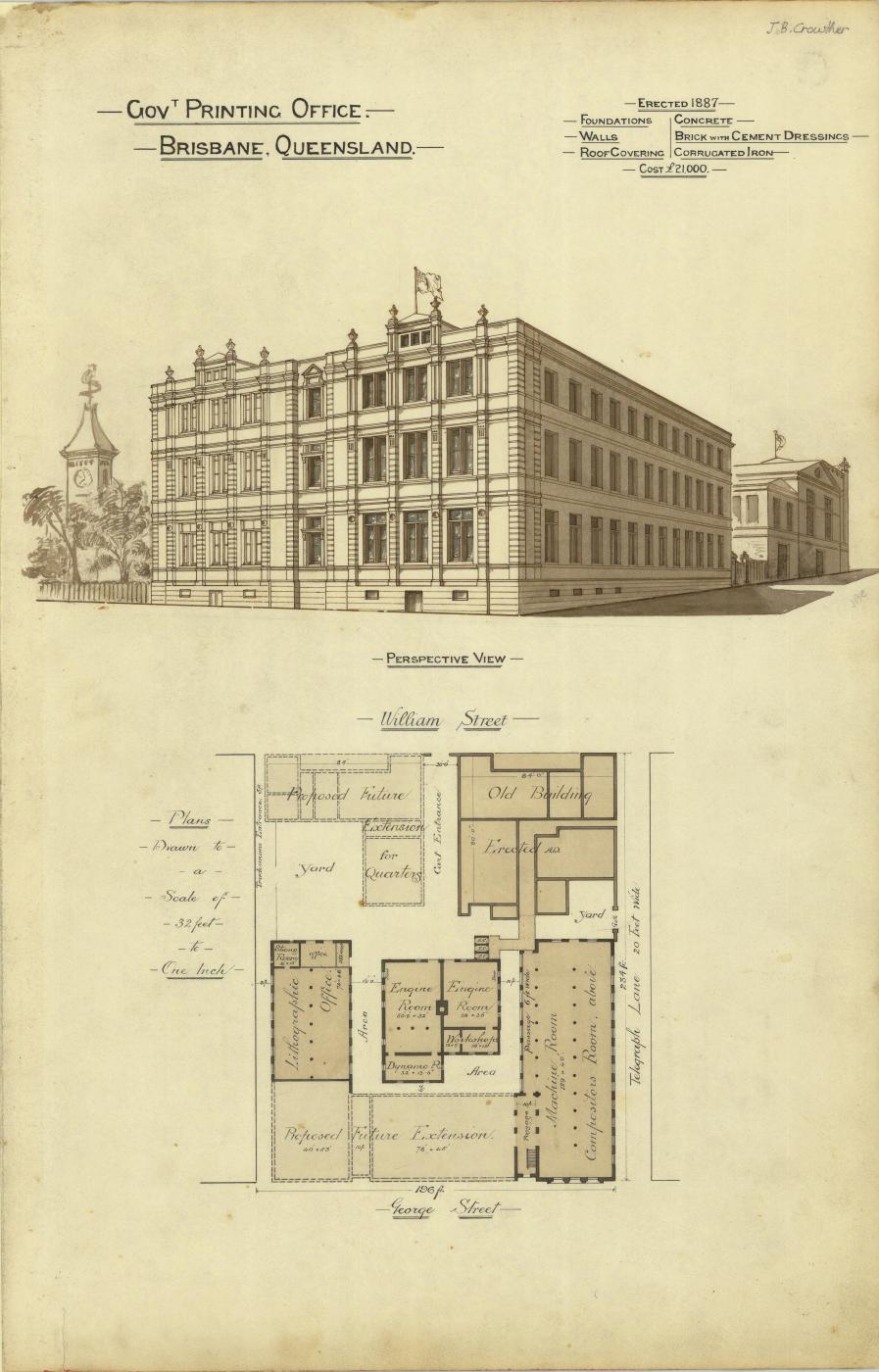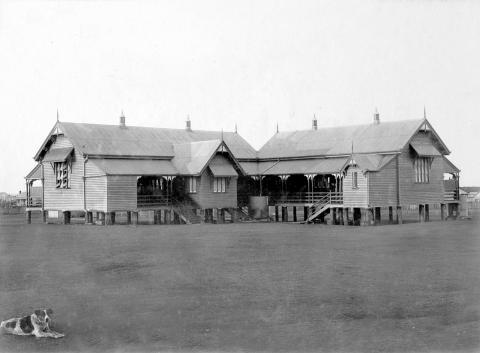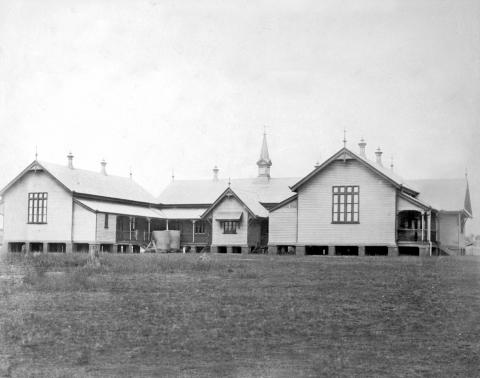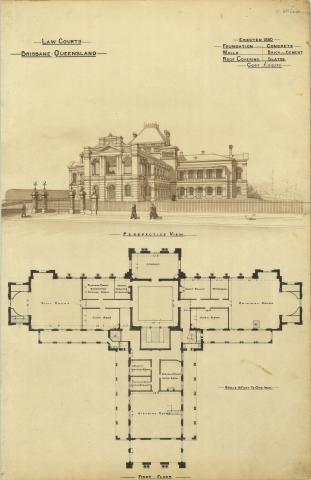
- News of the day
-
Daily Mercury, Wednesday 28 November 1917, page 3
MILITARY RAID. State Printing Office Visited. Copies of "Hansard" seized. Extraordinary Gazette issued. Premier's protest and Prime Minister's reply.
Brisbane, November 27
A Queensland Government Gazette Extraordinary was circulated in the streets of Brisbane tonight, in which the Premier, Mr. T. J. Ryan, under the heading of "To the Public of Queensland," says that he deems it his duty, on behalf of the Government of Queensland, to inform the public that "Hansard" No. 37, containing the report of the proceedings of the Legislative Assembly in this State on the 22nd instant, has been denied transmission through the post office by the Federal Government and further, that on the 23rd instant the Queensland Government Printer received a memorandum from the censor forbidding him to print or publish, in contravention of the War Precautions Regulations, 1915, any matter being or purporting to be a report of a debate in the Legislative Assembly of Queensland on 22nd November 1917, on the question of the military censorship without the permission of an officer of the censorship staff.
Mr. A. Cumming, the Government printer, the Extraordinary continues, on November 24 acknowledged the receipt of the memorandum and stated that the official report of the debate referred to in the censor's memorandum had been printed and published before he received the memorandum. The Government Printer suggested that the proper course for the censor to take in the circumstances would be to apply immediately to the proper court for an injunction to restrain further publication of the report complained of and so text the validity of the claim set out in the censor's memorandum.
No reply, says the Gazette, was received by the Government Printer, but late last night the military authorities made a raid on the Queensland Government Printing Offices and seized some thousands of copies of “Hansard." The Premier, on November 27, wrote to the Prime Minister saying that he desired to know, on behalf of his Government, whether the Prime Minister was aware that the Federal postal authorities in Queensland had failed to transmit copies of "Hansard" No. 37, containing the report of the debate on the military censorship and that last night the military authorities had raided the printing office and seized some thousands of copies of the same "Hansard” intended for distribution to the public of Queensland. He could not think that the above action was taken under his (Mr. Hughes') direction, but if such action was taken under his instructions,or under instructions from any member of his Government, he (Mr. Ryan) desired, on behalf of his Government, to protest against such an invasion of the rights of a sovereign State. Mr. Ryan added: "You must realise the great necessity of avoiding anything in the nature of displays of military force which may influence the public mind at a time when feeling is already running high.”
To this letter he had not received a reply. In conclusion, Mr. Ryan said: "My Government will take the necessary steps with the legal means at its disposal to inform the public on the matter, and in the meantime may I express the hope that all citizens will respect the law and maintain the strictest order.”
- Background
-
The Queensland Government Printing Office (former) was located between George Street and William Street, south-east of Stephens Lane, between 1862 and 1983, and consisted of a number of buildings. As the first purpose-built government printing office in Queensland, the Government Printing Office played an important role in administration of the colony and then the state of Queensland. The former Government Printing Office complex, which demonstrates the quality and evolving styles of the work of the Colonial/Government Architect's Office between the 1870s and the 1910s, currently consists of two buildings, built over three different periods: a three storey brick building facing William Street constructed 1872-74; a three storey brick building erected along Stephens Lane between 1884-87; and a three storey brick extension to the Stephens Lane building, constructed along George Street between 1910-12.
A government printing office was required in Queensland after separation in 1859 when the establishment of the new Colonial Government generated a need for the printing of Hansard, the official report of the proceedings of the Houses of Parliament. Many other items were also printed on the premises, including postage stamps, Government Gazettes, Acts of Parliament, annual reports of departments, survey maps, text books, electoral rolls, school readers, and banknotes.
The dissemination of Hansard and other government information to the public is vital to the healthy operation of a democracy, ensuring that the business of parliament is accessible to all, and facilitating transparency regarding government decisions. The printing office was therefore integral to the operation of the Queensland Government - and its importance was reflected by its proximity to Parliament, the quality and scale of the printing office buildings, and the quality of the documents produced.
As Queensland grew, so did demands on the Government Printing Office. The 1862 timber building was altered in 1863 and 1864, and in 1865 an ‘L' shaped three storey brick and stone building (not extant), also designed by Tiffin, was constructed to the rear (north-east), using day labour. It included an underground cistern with a domed top (location unknown) and was connected to the 1862 building. By 1872 the complex included a small engine room, workshop and stables (none of which are extant) behind the 1865 building. That year James Beal (Government Printer 1867 to 1893) requested a new building to cope with the increased work of the Government Printing Office, and in August 1872 the Secretary for Public Works recommended that Francis Drummond Greville (FDG) Stanley prepare a plan.
Stanley wanted the new building at the Government Printing Office to be constructed with machine-pressed bricks, which were not yet produced in Brisbane. At the time it was reported that he wanted ‘to provide as much accommodation as possible in a plain substantial building, without striving after architectural display. The structure, however...will have really a handsome and imposing appearance'. Tenders were called in October 1872, and the tender of John Petrie, for £4,751 plus £170 for machine pressed bricks and £50 for internal dressing, was accepted. The building included stone footings, brick walls, cast iron airbricks to the understorey and at the ceilings, cast iron columns (ground and first floors, front wing only), and water closets (WCs) and a lift at the end of the rear wing on each floor. The roof was steeply pitched to assist ventilation. Construction was estimated to take six months, but the new office was not completed until 1874, with delays being blamed on a shortage of bricklayers. The machinery was installed and gas lights were fitted by April 1874, and the finished cost was £5331/3/6.
The front (William Street) wing of the new building stood on the site of the 1862 building, which had been demolished in late 1872. The new William Street building had an ‘L' shape and extended onto the (recently repurchased) land previously occupied by the Commandant's residence, wrapping around the south-east side of the 1865 building. It had an arcade to the street frontage of the ground floor, and the roof was covered in Welsh slate to reduce the risk of fire. Narrow rear verandahs were located on the north-west side of the first and second floors of the rear wing. The ground floor included a public counter, offices, newspaper room, and a large publishing room in the front wing, with a store in the rear wing. The first floor consisted of a composing room in the front wing, with a drying room in the rear wing; while the second floor contained a binding room in the front wing and a ruling room in the rear wing. It was connected to the 1865 building, which included a machine printing room on the ground floor, the engraving and lithographic work on the first floor, and machine ruling and book binding on the second floor.
In 1879 the neighbouring telegraph office (former church) was converted into the residence of the Government Printer, and in 1880 the engine room at the rear of the 1865 building was enlarged and the stables were demolished. More land was purchased in 1883, prior to further expansion of the Government Printing Office complex onto land to the south-east. A master plan for the Government Printing Office, drawn in 1884, planned a ‘U' shaped building along Telegraph Lane, George Street, and returning along the south-east side of the complex, wrapping around a new engine room. It also planned a replication of the William Street building on the other side of a ‘cart entrance' from William Street to the engine room, but this never occurred.
Instead, between 1884 and 1887 three new buildings were constructed, all by John Petrie: a three storey brick building along Telegraph Lane, with a short elevation to George Street; a two storey brick engine room (not extant) to the south-east; and a two storey brick Lithographic Office (not extant) south-east of the engine room. The 1880 engine room extension to the rear of the 1865 building was demolished around this time.
In 1912 electricity was connected to all buildings on the site by the Edison and Swan United Electric Light Company Ltd. Various other improvements were made to the building over the years, including strengthening of the floors and installation of fire sprinklers. By 1916 there were three small, one-storey buildings (stores and a workshop, not extant) in the corner of the complex, located between the William Street building and the Lithographic Office. Soon afterwards, the importance of the Government Printing Office in disseminating information to the public was demonstrated. In November 1917 the Australian military conducted a night raid on the Government Printing Office to seize copies of Hansard which the Federal Government did not wish circulated, as they covered debates in the Queensland Parliament on military censorship and the conscription issue. The military also temporarily took possession of the Government Printing Office in August 1918, this time to prevent coverage of statements made in the Queensland Parliament about the treatment of Irish and German internees.
The consolidation of government ownership and usage along George and William streets led to a number of schemes being investigated by the state to further the development of a ‘government precinct'. By 1965, a masterplan had been developed that involved the demolition of all buildings between the old Executive Building and Parliament House, to enable the construction of three high-rise office buildings in a ‘plaza setting'. However, only one of these was built - between 1968 and 1971 a new Executive Building was constructed south-east of the Government Printing Office. By the early 1970s the 1960s plan for the precinct was considered no longer suitable and a number of other proposals for the area were explored.
A 1974 ‘George Street Masterplan' involved lower-rise buildings spread out over greater areas and the demolition of the Belle Vue Hotel and the Mansions [QHR 600119]. A major influence in ultimately shaping the layout of the area during the 1970s was the growing community support for the retention of older buildings within the government precinct, especially the Belle Vue Hotel and the Mansions. Spearheaded by the National Trust, the government-related associations and links between buildings, their architectural qualities, and aesthetic contributions to the area were highlighted in submissions to the government and in the public sphere. The unannounced June 1974 removal of the balconies of the Belle Vue Hotel was a deliberate action by the State government to degrade the visual appearance of the area, and drew further attention to the conservation cause.
In April 1979 Cabinet adopted a recommendation for a schedule of demolition work to further the development of the government precinct. The Belle Vue Hotel was to be demolished, but the Mansions and the original section of Harris Terrace [QHR 600121] were to be retained, renovated and adapted. On 21 April, three days after this decision, the Belle Vue Hotel was demolished in the early hours of the morning, a notorious event in the history of heritage conservation in Queensland.
The Government Printing Office moved to new premises in Woolloongabba in October 1983, and a number of former Government Printing Office buildings were demolished in 1986-87 to make way for a four storey Executive Annex, connected to the 1971 Executive Building, and a four-level underground car park.
Courtesy of the Queensland Heritage Register



